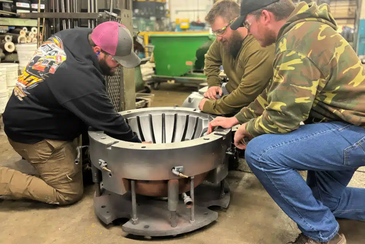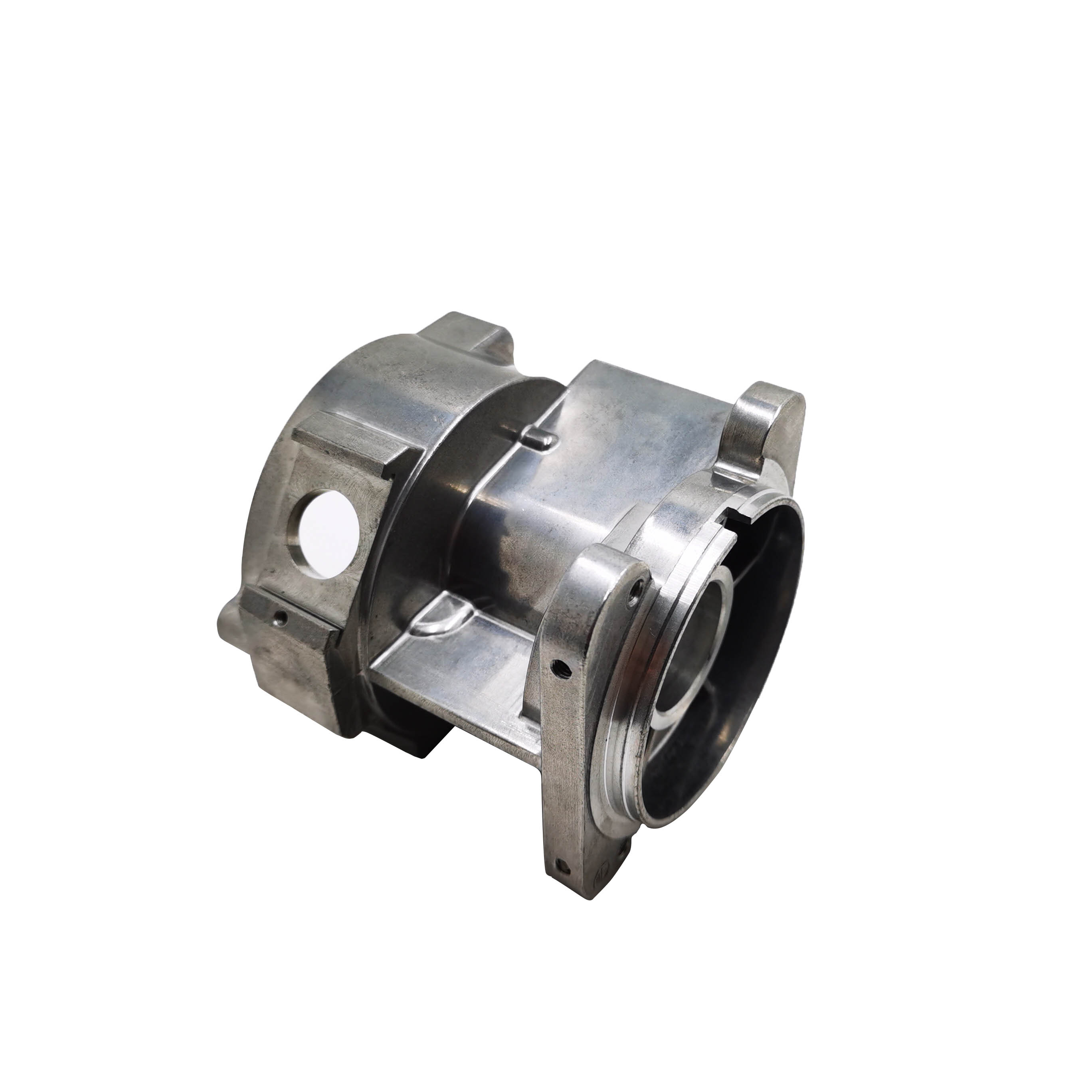Comprehending the Ecological Advantages of Aluminum Foundry Techniques
Aluminum foundry strategies play a crucial role beforehand sustainability within the manufacturing sector. By executing sophisticated reusing approaches and energy-efficient techniques, these methods greatly decrease waste and carbon footprints. Ingenious spreading approaches further improve resource preservation initiatives. As industries increasingly prioritize environmental obligation, comprehending the full impact of these techniques becomes essential. What certain advancements are leading the method in this makeover?
The Duty of Light Weight Aluminum in Lasting Production
Lots of materials contribute to sustainable manufacturing, light weight aluminum stands out due to its unique properties and recyclability. This lightweight metal is not just resilient yet also possesses outstanding rust resistance, making it a perfect option for numerous applications, from automobile to construction. Its high strength-to-weight ratio leads to power savings during transport and usage. Moreover, aluminum can be reused forever without losing its integral high qualities, promoting a circular economic climate.
The production process of aluminum has progressed, incorporating energy-efficient approaches that decrease carbon impacts. By making use of renewable resource sources, manufacturers are increasingly lessening the ecological impact connected with light weight aluminum production. In addition, making use of recycled aluminum requires considerably much less power contrasted to extracting and refining primary light weight aluminum, bring about reduced greenhouse gas exhausts. As industries seek lasting options, light weight aluminum's versatility and green characteristics placement it as a critical product in the search of greener production practices.
Advanced Recycling Techniques in Aluminum Foundries
Advanced recycling methods in light weight aluminum foundries are reinventing the way scrap light weight aluminum is refined and reused. Ingenious techniques, such as closed-loop recycling systems, allow shops to redeem aluminum from production waste and outdated products successfully. These systems lessen material loss and enhance the top quality of recycled aluminum, making it a viable alternative to key light weight aluminum manufacturing.
In addition, progressed arranging modern technologies, consisting of automated optical sorting and X-ray fluorescence, boost the splitting up of aluminum from other materials, making sure greater pureness levels in recycled outputs. This accuracy lowers contamination, which can jeopardize the stability of the final item.
The assimilation of innovative melting innovations, such as induction melting and energy-efficient heating systems, improves the recycling process, decreasing power usage. Collectively, these advancements contribute to an extra sustainable light weight aluminum industry by reducing reliance on virgin materials and reducing greenhouse gas emissions related to light weight aluminum manufacturing.
Power Performance Improvements in Factory Workflow
Power effectiveness renovations in aluminum foundry operations can significantly enhance sustainability practices. Executing waste heat healing systems allows factories to repurpose excess energy, lowering general power consumption. In addition, advancements in procedure automation streamline procedures, resulting in decreased waste and maximized source use.
Waste Heat Recovery
Applying waste heat healing systems in aluminum shops substantially enhances energy performance by capturing and recycling excess thermal energy generated during production processes. These systems assist in the conversion of thrown away heat into functional energy, which can be utilized for different applications within the shop, such as pre-heating materials or powering tools. By recuperating warmth that would or else be eliminated into the atmosphere, shops can substantially decrease their total energy usage and greenhouse gas exhausts. This strategy not just reduces operational expenses but likewise promotes sustainable methods within the sector. Additionally, the fostering of waste warm healing modern technologies aligns with governing standards targeted at lowering ecological influence, making it an essential element of modern-day light weight aluminum factory operations.
Process Automation Perks
Automating procedures in aluminum foundries can significantly enhance energy efficiency by optimizing manufacturing operations and minimizing waste. By carrying out innovative technologies such as robotics and artificial intelligence, foundries can streamline procedures, decreasing unneeded energy intake. Automated systems promote exact control over temperature level and product handling, making sure that power is used just when needed. In addition, real-time tracking enables for prompt modifications, decreasing the risk of power loss. The assimilation of automation not only improves productivity yet additionally lowers functional expenses, making factories much more affordable. Because of this, these energy-efficient methods add significantly to sustainability objectives, lowering the environmental impact of light weight aluminum production while fulfilling boosting market demands - Precision aluminum casting. Boosted power effectiveness via automation represents a vital step towards greener foundry operations
Lowering Waste With Innovative Casting Approaches
Innovative spreading techniques play an essential duty in reducing waste in light weight aluminum foundries. Methods such as innovative molding and the usage of recyclable products substantially lessen manufacturing scrap. These methods not just improve effectiveness however also contribute to an extra lasting production process.
Advanced Molding Techniques
As industries significantly prioritize sustainability, progressed molding methods in light weight aluminum shops emerge as efficient remedies for decreasing waste. These ingenious approaches, such as 3D printing and accuracy mold production, significantly improve the performance of the spreading procedure. By making use of computer-aided layout (CAD) and simulation innovations, makers can maximize mold geometry, lessening product usage while preserving product stability. Furthermore, advanced methods make it possible for the production of complex shapes that traditional methods can not attain, lowering the demand for find more info added machining and consequently lowering scrap product. The flexibility of these strategies enables quick prototyping, more lowering preparations and energy intake. Overall, the application of sophisticated molding techniques stands for a crucial action towards environmentally liable light weight aluminum manufacturing, aligning with global sustainability objectives.
Recyclable Material Application
Recyclable products play an essential function in minimizing waste within light weight aluminum factories, transforming the spreading landscape with their effective utilization. By incorporating scrap light weight aluminum and other recyclable parts into the manufacturing process, factories can considerably reduce the demand for virgin products. This not only conserves all-natural sources but likewise lessens energy intake connected with mining and refining. Innovative casting methods, such as die spreading and sand casting, enable seamless assimilation of these products, making sure top notch outcomes. In addition, using recyclable products fosters a round economic climate, where sources are consistently reused and repurposed, reducing land fill contributions. Eventually, the critical usage of recyclables enhances sustainability while promoting cost-effectiveness in light weight aluminum shop operations.
Lessening Production Scrap

Life Process Evaluation of Aluminum Products
Although aluminum is extensively acknowledged for its lightweight and resilient residential or commercial properties, a complete Life Cycle Assessment (LCA) exposes the ecological impacts related to its manufacturing, usage, and disposal. The LCA procedure analyzes the power usage, greenhouse gas discharges, and resource exhaustion connected to aluminum items from removal of bauxite ore to end-of-life monitoring. Main light weight aluminum production is energy-intensive, commonly relying upon nonrenewable fuel sources, which contributes considerably to carbon impacts. In contrast, recycling light weight aluminum offers significant ecological advantages, as it uses only a fraction of the power needed for main manufacturing. The reusing procedure minimizes land fill waste and preserves all-natural sources. The LCA additionally takes into consideration the item's long life and potential for reuse, stressing the significance of sustainable style. Overall, understanding the life cycle effects of light weight aluminum items is important for making informed decisions that focus on ecological sustainability within the market.
Situation Studies: Successful Lasting Practices in the Sector
The light weight aluminum market has actually started to accept ingenious sustainable practices that deal with the environmental obstacles determined in Life Cycle Evaluations. One noteworthy case is a leading shop that executed a closed-loop recycling system, considerably lowering waste and power usage. By reusing scrap light weight aluminum in manufacturing, the facility achieved a 40% decrease in its carbon footprint.
One more example entails a manufacturer that took More Help on renewable resource resources, powering its operations with solar and wind energy - Aluminum Casting Company. This shift not only decreased greenhouse gas exhausts but additionally improved the business's reputation amongst ecologically conscious customers
Furthermore, a third foundry has bought sophisticated spreading methods, which maximize product usage and minimize problems, further reducing source intake. These situation studies highlight that the aluminum industry is qualified of integrating lasting practices, showing both ecological responsibility and financial feasibility, inevitably adding to a more sustainable future.
Regularly Asked Concerns
How Does Aluminum Contrast to Various Other Metals in Sustainability?
Aluminum is typically considered a lot more lasting than many metals due to its recyclability, lower power demands for production, and decreased ecological impact. Its lifecycle effectiveness exceeds that of steel and copper in numerous applications.
What Is the Carbon Footprint of Aluminum Shop Processes?
The carbon impact of aluminum factory processes varies, generally varying from 4 to 15 statistics loads of carbon dioxide per lots of aluminum produced. Aspects affecting this consist of energy resources, innovation, and the efficiency of procedures.
Exist Health And Wellness Threats Related To Aluminum Foundry Workflow?

What Are the Expenses Related To Lasting Aluminum Techniques?
The expenses connected with lasting aluminum strategies consist of higher preliminary financial investments in modern technology, prospective increases in operational costs, and ongoing maintenance. Nevertheless, these are frequently offset by long-term cost savings and minimized ecological effect.
Just How Does Light Weight Aluminum Recycling Effect Resident Communities?
Light weight aluminum reusing positively effects local neighborhoods by developing jobs, decreasing land fill waste, and lowering power expenses. It cultivates financial growth and advertises environmental stewardship, resulting in healthier living conditions and improved community interaction in sustainability efforts.
In addition, the usage of recycled light weight aluminum needs substantially much less power contrasted to extracting and fine-tuning key aluminum, leading to lower greenhouse gas exhausts. Advanced reusing methods in aluminum shops are changing the method scrap light weight aluminum is refined and reused. Aluminum Casting Company. Carrying out waste heat healing systems in aluminum shops substantially improves energy performance by recording and recycling excess thermal energy created during production processes. Automating procedures in light weight aluminum foundries can significantly boost power efficiency by maximizing production operations and reducing waste. The carbon impact of aluminum shop processes differs, generally ranging from 4 to 15 statistics tons of Carbon dioxide per bunch of aluminum produced